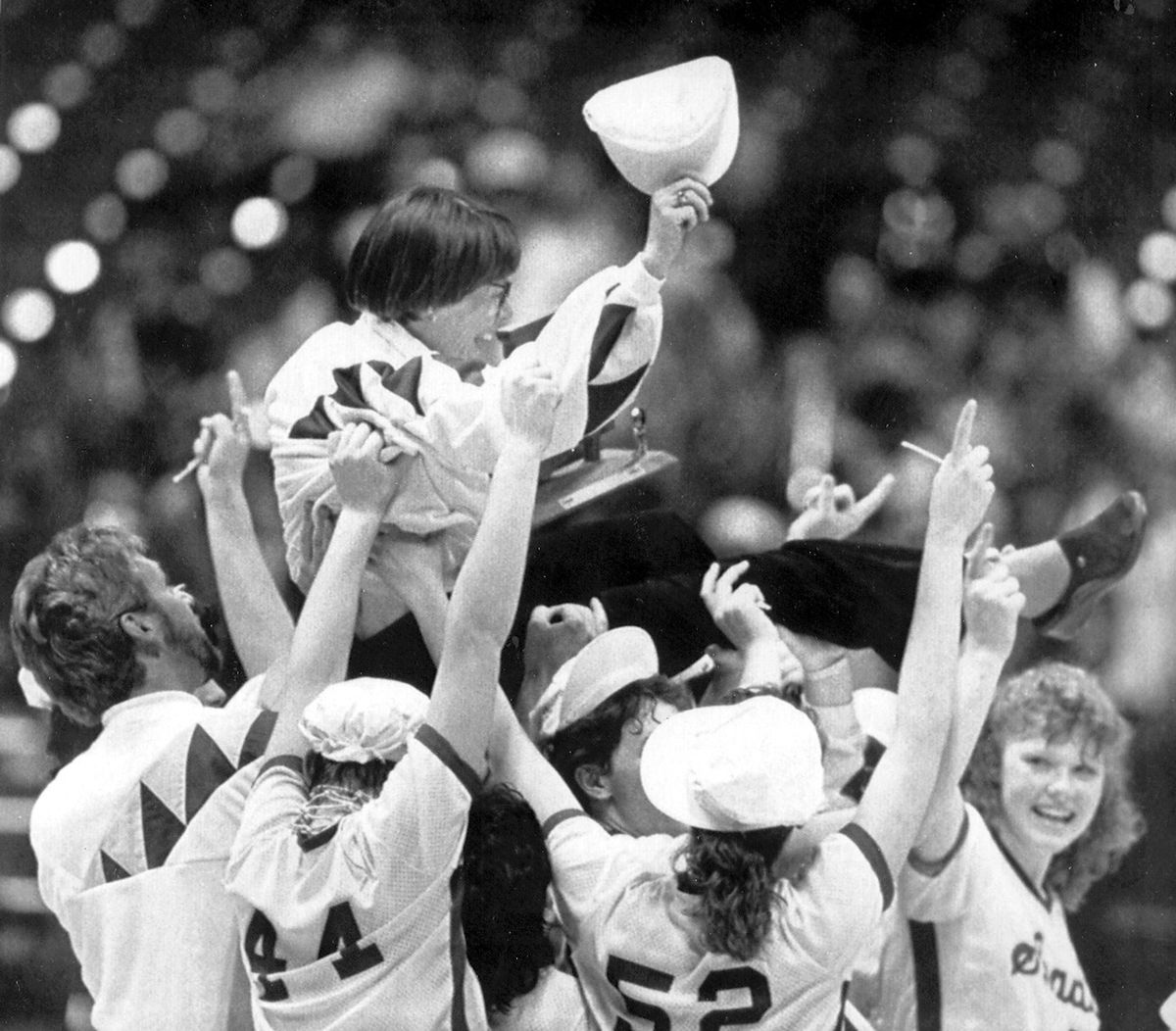Blanchette: Sheridan, players forged trails together

Linda Sheridan was good at games. Maybe underrated at charades, however.
This story has been retrieved from a conversation that took place 28 years ago, or well before digital recorders. Reportorial penmanship was still relevant then, though primitive. But the notes were solid and if memory serves, there was a hint of a subversive’s pleasure in her voice.
Sheridan was retelling the details of her return to Shadle Park High School in 1974, nine years after she’d left there with a diploma. She was hiring on to teach phys ed and intended to coach anything thrown her way, as she had at a previous job in California.
But there wasn’t much. The year before, Shadle had started a girls track program. Gymnastics had been going forever. That was about it.
“What they really wanted,” Sheridan remembered, “was a Hi-Lassies advisor.”
That was the school’s marching/spirit ensemble, and Sheridan’s resume was admittedly thin in that area. But she wanted to work. So she played along. She told her future bosses – and it was not entirely a charade – that she would be “a heck of a Hi-Lassies advisor.”
Is there any reason to think she wasn’t at least that?
Still, she had other ambitions.
“I don’t think they really imagined they’d be needing a coach,” she said, “but I knew that day was coming for them.”
Sooner rather than later, in fact. Sheridan would coach Shadle’s first volleyball team that fall, basketball following a couple of years later. Adding up the wins (820) and championships (seven at state alone) that accrued over the course of the next quarter century requires skilled bookkeeping. Yet it’s not remotely as daunting as toting up all the heads and hearts she crawled inside of, and the worlds she opened up for anyone lucky enough to play for or learn from or perhaps even just talk with her.
It will be a full house on Monday when Shadle and Spokane say goodbye to Linda Sheridan, dead at the age of 65 after a ruthless siege of ALS. The memorial has been booked into the only appropriate venue.
The gymnasium that bears her name.
Speaking of bookkeeping, it would be interesting to know just how many high school gyms across the land have been dedicated to a female coach.
The easy answer – not enough – is also the wrong one, seeing as it doesn’t assign nearly enough stature to what Sheridan achieved and stood for in her hometown.
A lot of that could be seen in her teams and a lot couldn’t be seen, lessons that may be merely tangential to winning and might flower only years after they’re seeded in a teenage ego. Long ago, trust used to be conferred with the title “coach.” Sheridan earned hers, player by player, and gave it back as it was similarly earned.
Mentors should never be undervalued. Pioneers need to be prized.
The ink was barely dry on the signature Richard Nixon affixed to Title IX when Sheridan returned to Spokane. Any mention of pioneers in women’s sports must inevitably underscore their fighting side in that era, and what they didn’t have.
Access to facilities. Uniforms, on occasion. Respect.
Battles had to be waged and Sheridan waged them. She once recalled jousting with Shadle boys coach Dave Robertson over gym time in the early days “and then everybody lightened up and we became very good friends.”
But pioneers must also create.
Like other female coaches, Sheridan had to create a culture, hard to come by in those early days, that let her players know being an athlete was more than just OK. That they deserved the chance and an audience. Success was worth a risk, too, but it didn’t have to be consuming. Possibility, well, that was the thing that should be consuming.
She also had to create herself. Six-woman, split-court basketball at Washington State and bump-and-giggle volleyball hadn’t prepared her to coach the games the way they needed to be coached, if anyone was going to take this proposition seriously. So she read and went to clinics and sought out help to open up the possibilities for herself.
And if she thought of herself as a pioneer, she had to get her players thinking the same way.
“At the same point every season,” she said, “I end up saying, ‘This is your season. Guess what? I’m coming back next year.’ I have to get them to create something of real value to them, because their career here is only going to be a year or two.”
It was all very sage, but she was fun, too. The nickname alone told you that.
They called her “Squat.” And she was a giant.